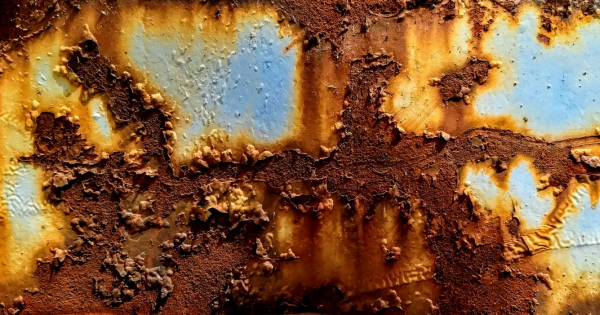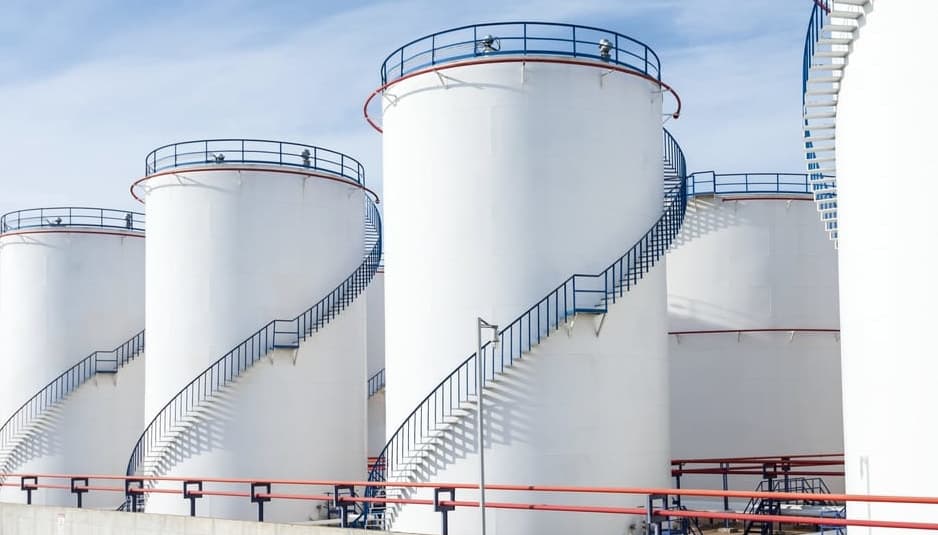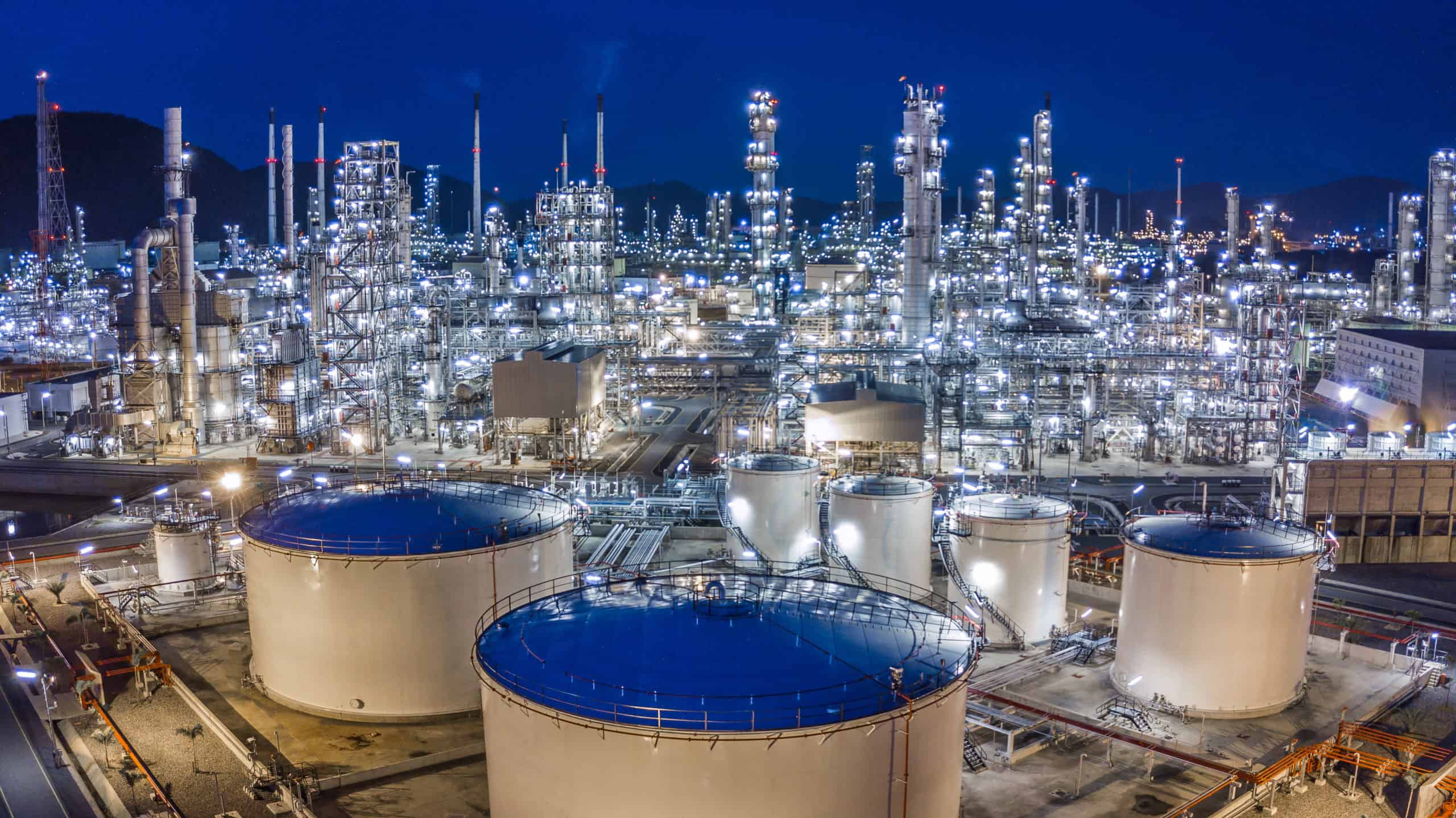It’s no secret that corrosion is a serious problem that many industries experience from infrastructure to the armed forces. In fact, corrosion costs each of the U.S. armed services an average of $5 billion every year. This common issue can cause a whole array of problems from chemical leaks to storage tank failures.
But what exactly causes corrosion and what can you do to keep this natural process from negatively impacting your industrial facility? Here, we’ll dive into how corrosion affects industrial storage tanks and what your facility can do to fight back against corrosion and its costly consequences.
What is corrosion?
Corrosion is a natural process that occurs when metal reacts with oxygen, hydrogen, sulfur, dirt, or bacteria. The electrons in the atoms of the metal surface are taken by the oxygen molecules in the air. When oxygen gains electrons from the metal surface, it creates an oxide with the metal. This chemical transformation will gradually wear away at the metal material. Most corrosion occurs when a metal surface interacts with its environment, but some metals like steel can rust when they’re placed under too much stress.
While oxidation is the most common electrochemical reaction involving corrosion, it’s also possible for metal surfaces to interact with hydrogen and sulfur. When the electrons from the metal surface interact with hydrogen, it creates hydroxide. When the electrons interact with sulfur, the reaction creates sulfide. These chemical reactions are dangerous because corrosion gradually wears away at a structure’s strength and permeability to liquids and other substances.
How does corrosion affect industrial facilities?
Corrosion is especially dangerous when it involves industrial facilities and industrial storage tanks. Industrial storage tanks are used to house substances for a wide array of industries that can be hazardous to the environment and to facility personnel. Oil, for instance, is the most common substance housed by industrial storage tanks prior to being sold for commerce.
According to the Environmental Protection Agency (EPA), corrosion is the leading cause of storage tank and industrial piping failures. Depending on the environment of the industrial facility, corrosion can take anywhere from a few decades to a few months. Corrosion is a natural process that’s expected to happen over time, especially with older tanks. Tanks that are close to retirement age typically show signs of corrosion and rust and need to be replaced. However, when corrosion appears after just a few months, the problem isn’t the age of the storage tank but with its maintenance.
Industrial tank inspections and maintenance plans are crucial to prevent corrosion and other issues such as leaks and tank failures. When the surfaces of an industrial tank have become too corroded, they lose their strength. As a result, the surface might shift, break, or collapse. The result is a major environmental and health disaster that could wreak serious havoc on the surrounding area.
However, industrial storage tanks aren’t the only part of your industrial facility you need to worry about being affected by corrosion. The same corrosion can occur in your industrial facility’s piping system and other metal components that are attached to your industrial storage tanks. When your corrosion eats away at your piping system, it can cause weak spots, cracks, and breaks leading to chemical leaks that are dangerous to your personnel and the local environment. To protect against these dangerous, EPA regulations require industrial tank owners to take the necessary countermeasures to protect their piping systems against corrosion.
How can you prevent storage tank and pipe corrosion?
The good news is that corrosion can be prevented even if it’s a natural process. While you may not be able to keep your industrial storage tanks from rusting naturally as they age, you can increase your tanks’ lifespan and make them more reliable by taking the necessary precautions against corrosion and other chemical reactions.
The first step you can take against corrosion is safeguarding your assets with protecting coatings and linings. Coatings are a cost-effective way to prevent corrosion by creating a barrier between the stored substances and the metal surface of the storage tank walls. The moment your industrial storage tanks are put to work, your tanks are exposed to elements that make them vulnerable to corrosion such as oxygen, hydrogen, dirt, and bacteria. The quality of your tanks’ protective coatings and linings is your first line of defense against this natural chemical reaction.
InServe Mechanical is an industrial tank inspection services company that offers industrial coatings inspections services that are focused on keeping your coating systems in great shape. Coating and lining inspections that use the proper techniques are crucial to enhance the performance and service life of your storage tanks. When your coatings and linings are in great shape, it reduces the component replacement costs and repair costs over time. It also reduces the risk of storage tank malfunctions and unnecessary equipment downtime.
The second way you can protect your storage tanks from corrosion is by creating a scheduled maintenance plan. Maintenance is essential for keeping your industrial facility in working and efficient. Without proper and regular maintenance, small issues can quickly become major problems that can cost you an arm and a leg in the long run. As a part of your maintenance plan, you can include the third way to protect your storage tanks: professional inspections.
Industrial tank inspections are not only a great way to protect your industrial storage tanks against corrosion but they’re also a state and federal requirement. Time-based inspections are the traditional industrial tank inspections your facility needs to meet the minimum requirements of the Environmental Protection Agency, the Occupational Safety and Health Administration, and ASME Boiler and Pressure Vessel codes. However, there are other types of industrial tank inspections you can schedule with your local storage tank inspection company including risk-based inspections to protect your high-risk industrial equipment and NDE/NDT integrity inspections.
Regular industrial tank inspections ensure that not only is your industrial facility up to code but also that your equipment isn’t at risk for costly damages or in need of major repairs. Industrial tank inspections can help you catch corrosion and keep it at bay before it becomes a major problem for your facility.
Schedule an inspection for your storage tanks
InServe Mechanical offers a wide array of industrial tank inspection services including coating and lining inspections and inspections that require special certifications to meet EPA guidelines. InServe Mechanical’s inspectors and technicians are certified in their respective methods such as QUTE, QUSE, QUPA, QUSE-PA, QUTE-TM, and NRCan-NDTCB to the highest industry standards. What’s more, InServe Mechanical’s personnel also hold certifications in or conform to the minimum requirements of API, CWI, NACE, and ASNT SNT-TC-1A.
When you choose to work with InServe Mechanical, you can be sure that your industrial storage tanks are being inspected by experienced professionals who know what they’re doing. You can feel confident knowing you’re taking the right steps toward ensuring your storage tanks’ reliability and longevity. Corrosion is a natural process, but that doesn’t mean your storage tanks need to succumb to this chemical reaction.
By planning ahead with your local storage tank inspection services and maintenance team, you can fight back against corrosion and keep your industrial facility in efficient and quality working order. For more information about industrial storage tank inspections or to schedule an inspection with us, contact InServe Mechanical today.




